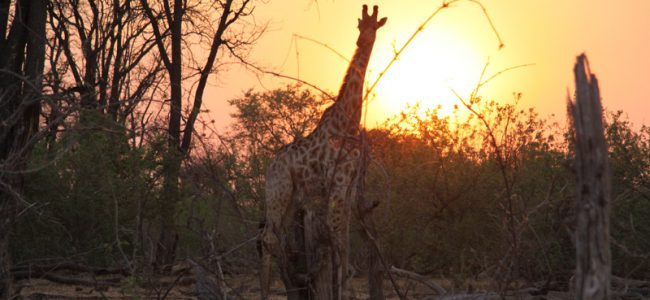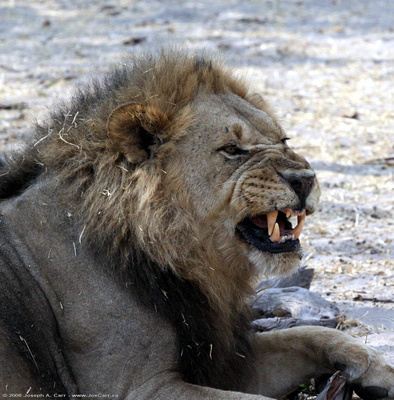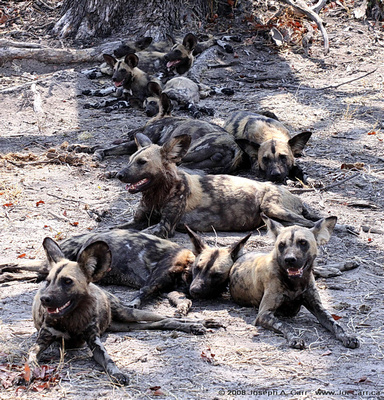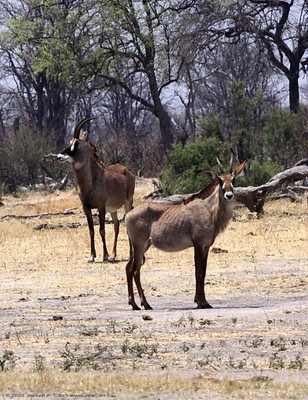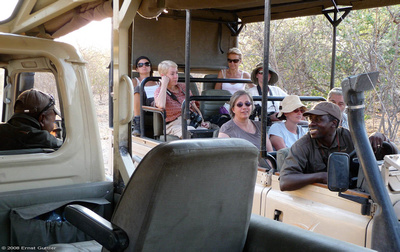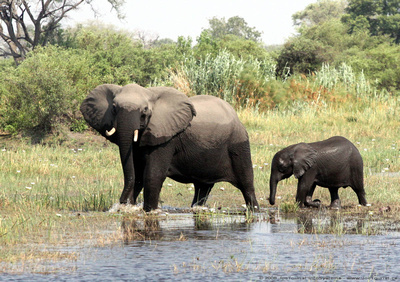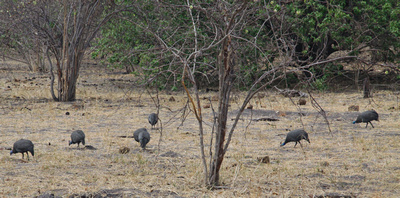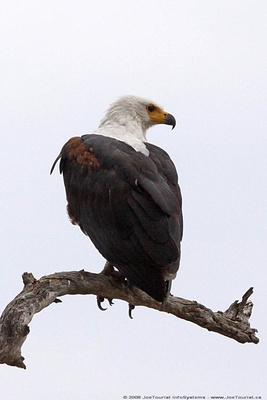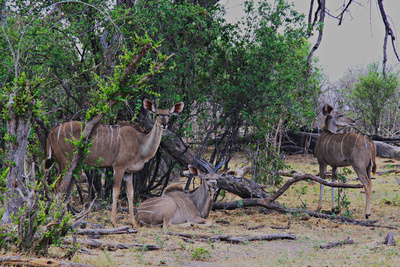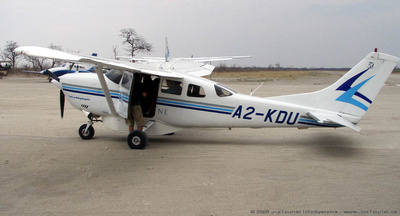Linyanti Camp, Okavango Delta, Botswana
October 17, 2008 – Friday – As I lie in bed this evening, I hear Hippopotamus in the spillway just a few metres from my tent flap.I quickly learn that this vacation is not going to include the luxury of sleeping in. Early morning is the most productive time to go on safari, so we need to get up before the Sun rises and be ready to observe the animals as they start their morning activities.
Here is our typical routine for the three days we were at Linyanti Camp:
- 5am wakeup
- 5:30am breakfast
- 6am -11am – Main Safari with a tea break mid-morning
- Noon Lunch in camp
- Siesta until 4pm – very hot part of the day (40°C in the shade)
- 4pm Shower
- 4:30pm-7:00pm – second Safari with a break
- 7:30pm dinner
Linyanti Camp is on the border between the Savuti Spillway and the dry mopane woodland. My tent is only a few metres away from the Spillway, so I have a wonderful location to observe wildlife from as they move along and through the water. We have strict instructions from camp staff to not leave our tents without an escort. This is not a zoo – this is real life! The big game in particular can be very dangerous. Each tent has a short drop toilet en-suite for night-time use, so we don’t have to go wandering around the camp in the dark to find the toilet.
There are rules to follow while on safari as well. First rule: stay in the vehicle at all times. Second rule: be quiet and don’t move around! The only time we get out of the vehicle is for rest stops and tea time. Our guides pick a safe spot and keep a watch out for animal movement while we are stretching our legs or having a snack. We must not wander off out of sight. Big game animals don’t consider the safari vehicle a threat, and providing we appear to be part of the vehicle by being quiet and still, they are quite happy to let us get close to them. They obviously know the vehicle is there, but they just don’t care, especially once they are conditioned to having vehicles approach them.
Land Rovers rigged for safaris typically hold 9 passengers, and Land Cruisers hold 10-12 passengers depending on how they are configured. Since there was only Ernst and myself in a Land Cruiser, we could take advantage of moving from side to side, and having our photo gear bags open and beside us at all times. This was an ideal situation, since we never had anyone in the way of observing or photographing an animal. Victor and his side man were also able to cater to our every need, since they only had two people to deal with. Ernst and I were very pleased with this situation, and I think you will agree I managed to capture some very good photos and video as the safari progressed.
October 18, 2008 – Saturday – Our morning safari is very productive. First up are two male lions and a female resting under some bushes beside the Savuti Spillway. Shortly after that Victor receives a radio report of some Wild Dogs, however it is some distance away. Nonetheless, we drive to the spot and are rewarded with perhaps the wildlife highlight of the trip: 6 adult Wild Dogs and 7 pups. Victor tells us there are only 2,000 left in the whole of Botswana. We sit there about five metres away from the pack and just take our time. They obviously just finished devouring a fresh kill, because they are all lying on the ground in the shade of a big tree. They don’t bother chasing off the vultures from claiming a few of the scraps.
Our late afternoon safari isn’t so productive, since we get stuck in the Kalahari sand. Victor radios for the service crew to rescue us, so we are on our way in less than an hour.
October 19, 2008 – Sunday – We park beside the Savuti Spillway and watch a female Elephant and her baby cross the water toward us. She is very wary of us, and takes her time before they both make a final dash for the shore and vanish into the cover. We also see Giraffe twice: once early in the morning as they are feeding on tree leaves, and again in the late afternoon as they are returning from the spillway. After we return to camp, some Elephants wander through the camp while we are resting in our tents.
October 20, 2008 – Monday – Linyanti Camp to Lechwe Island Camp – We had some rain last night which lasted about 20 minutes – enough to see some splatters in the sand, but not enough to do any good. I hear some Hippopotamus in front of my tent this morning, and take a photo through the tent flap. You don’t want to go outside and risk a confrontation, since Hippos can easily outrun humans, and they have a nasty attitude.
We leave for the next camp this morning. The closest airstrip is built in the delta and is flooded out, so we have to drive to an alternate airstrip. This takes all morning, so we make a safari out of it; stopping for morning tea and lunch along the way. The flight is delayed an hour, so we must spend the time waiting in the afternoon heat.
Being a private pilot, I love traveling in small aircraft. We were transferred between camps three times in small aircraft on this trip. I think my aerial photos of the Okavango Delta really show the beauty of the area. Although it is bone dry as we drive over the Kalahari sand while on safari, the water from the delta area nourishes the vegetation, and provides a biodiversity that rarely occurs elsewhere in Africa.
